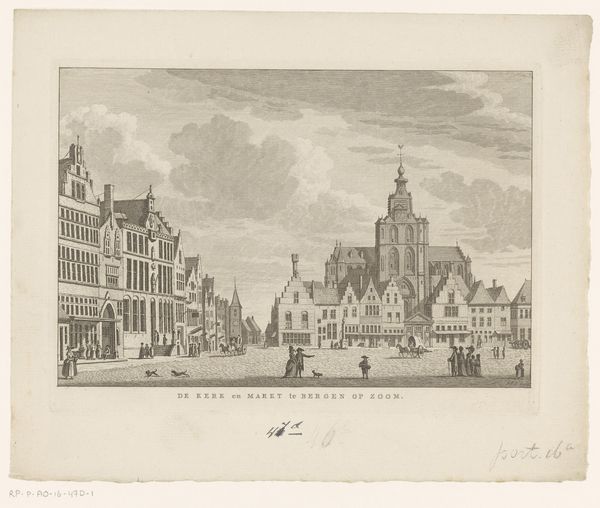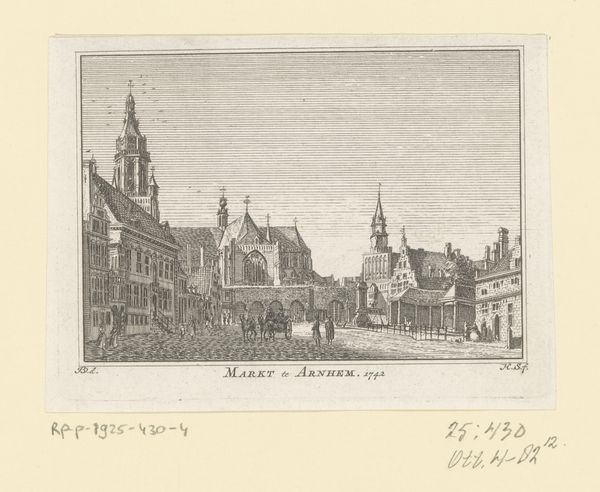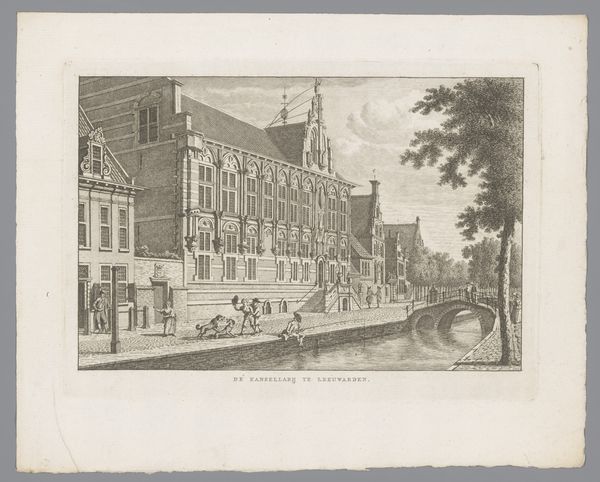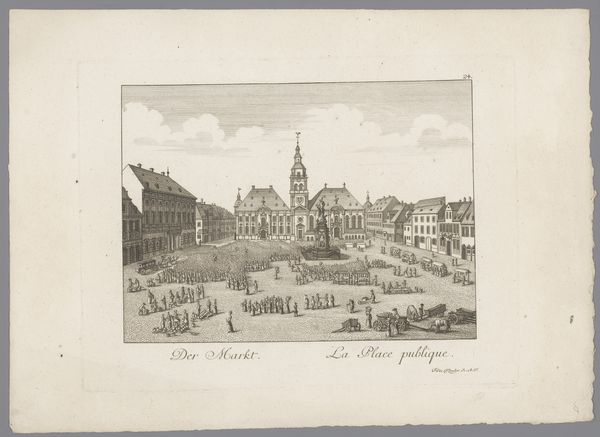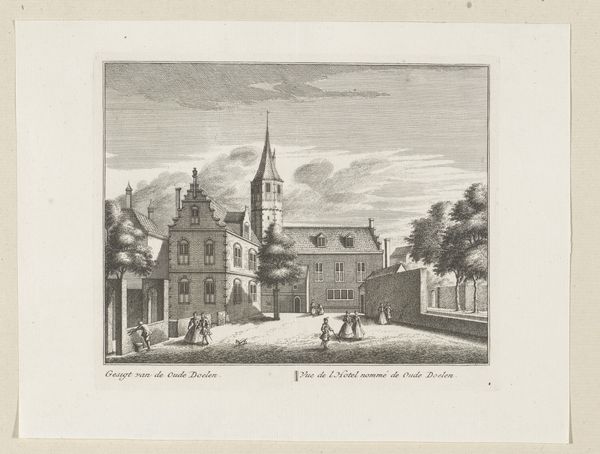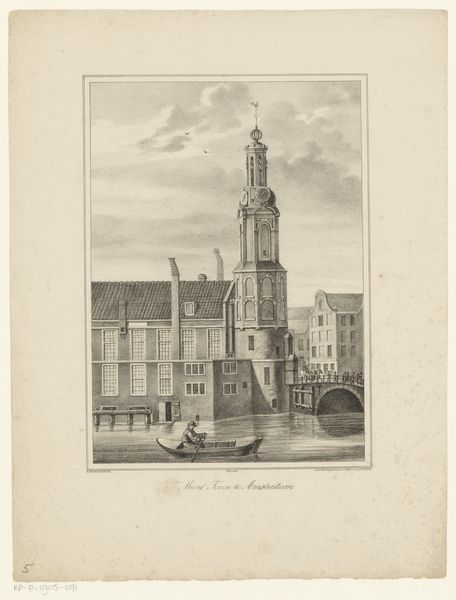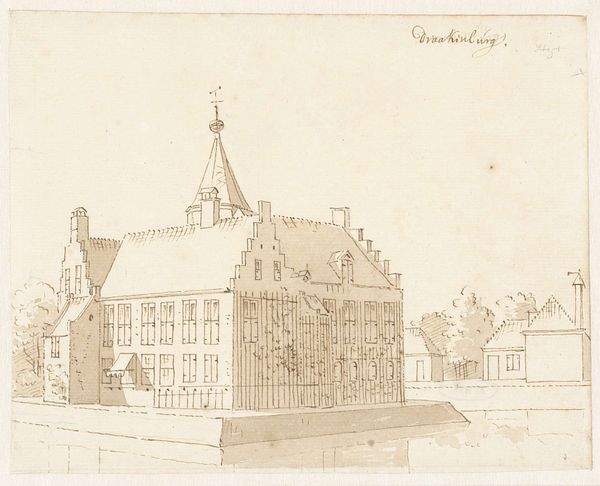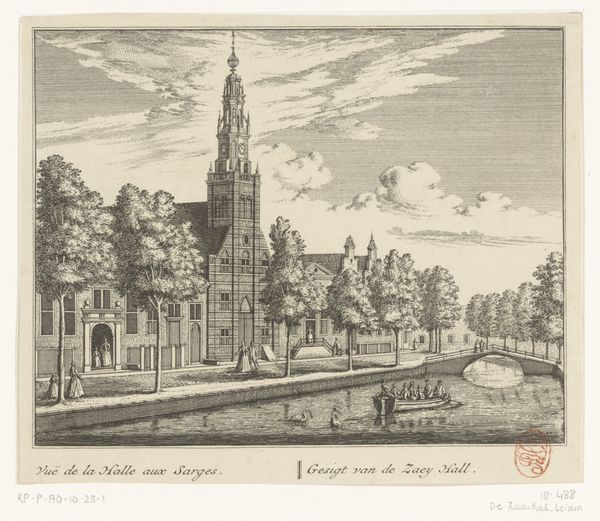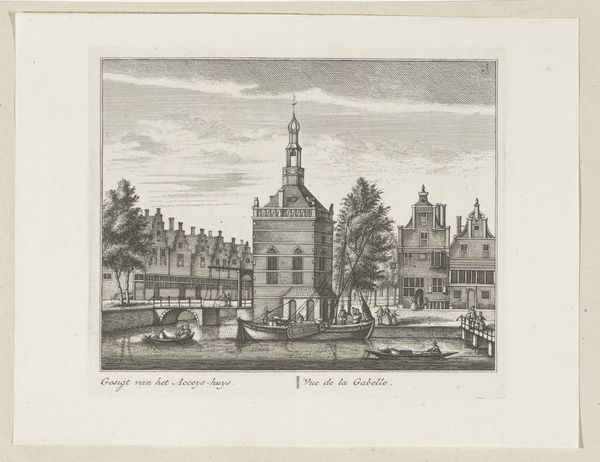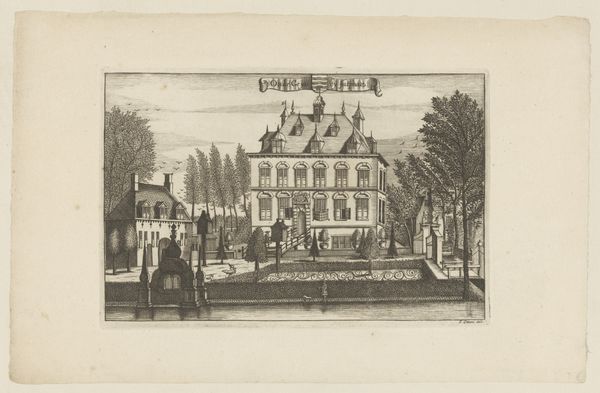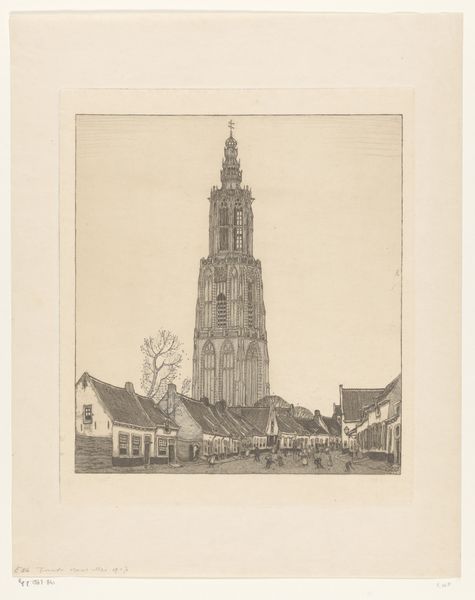
print, engraving
#
baroque
#
dutch-golden-age
# print
#
cityscape
#
engraving
Dimensions: height 171 mm, width 203 mm
Copyright: Rijks Museum: Open Domain
Curator: Looking at "Gezicht op de Waag te Alkmaar," a print by Leonard Schenk dating from around 1736 to 1746 and housed in the Rijksmuseum, one immediately notices its baroque and Dutch Golden Age influences in its meticulous rendering of this city scene. Editor: My first impression is of a calm industriousness. The fine lines and detail really emphasize the labor inherent in creating and maintaining urban infrastructure; you see people on the bridge, near boats on the canal, perhaps waiting at the Waag… Curator: Exactly. The very act of creating this engraving reflects that industriousness you mention. Consider the labor involved: the crafting of the copper plate, the application of ink, the pressure exerted, all creating multiple impressions, making the cityscape accessible to a broader public. What this piece offers isn't just an artistic vision, but insight into the commercial practices of disseminating such views to patrons and admirers of the time. Editor: And who were these patrons and admirers? Was the accessibility truly for everyone, or primarily a privileged class able to consume images that reinforced their social standing? How did Schenk navigate the social and political landscape, considering the role of the Waag—the weighing house—in controlling commerce? The image captures daily life, but perhaps subtly reveals imbalances of power through the very act of observation and documentation. Curator: Well, consider that Schenk and his contemporaries, producing prints of cityscapes, helped construct a sense of shared identity among city dwellers, an awareness of their local spaces in the wake of increasingly accessible imagery made for mass distribution. It shaped, to some extent, the material and social structures, how people understood and engaged with their environment through image production. Editor: Interesting! But does the picturesque tranquility downplay other experiences? I am intrigued by the limitations it inadvertently presents. Curator: A vital perspective, and important questions. It shows us how considering the intersection of material creation and its broader socioeconomic functions allow for layered readings of a seemingly straightforward image. Editor: Absolutely. It calls on us to examine not only what's shown, but the framework surrounding its making, distribution, and how that all influenced perception.
Comments
No comments
Be the first to comment and join the conversation on the ultimate creative platform.

